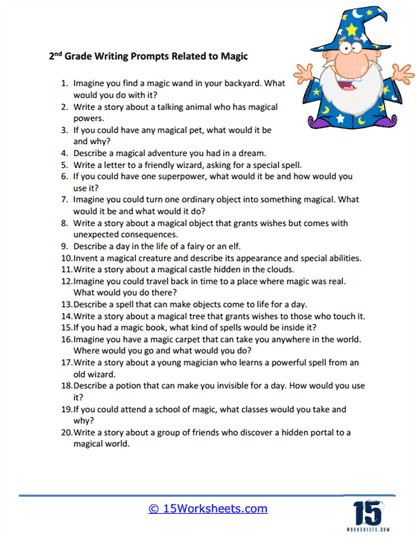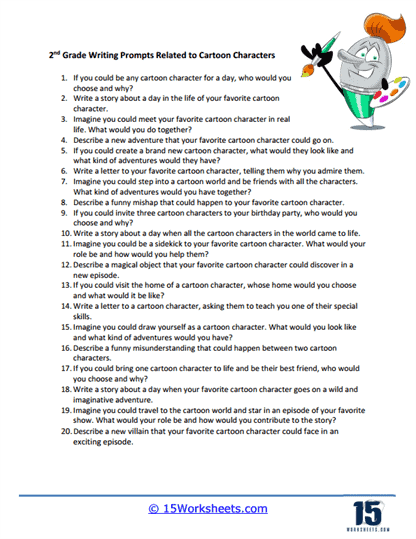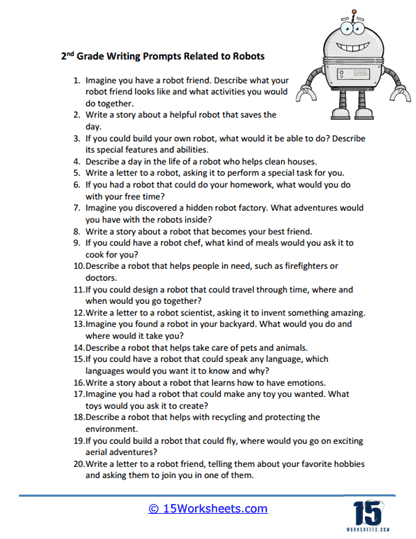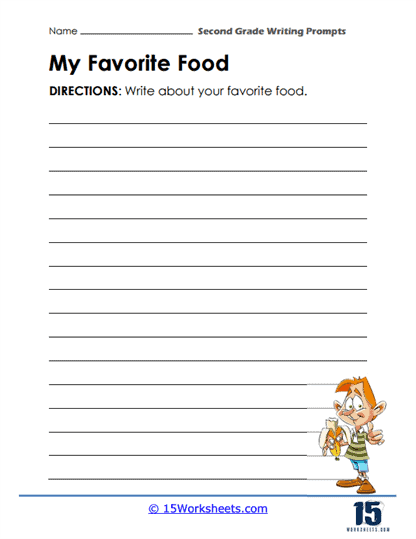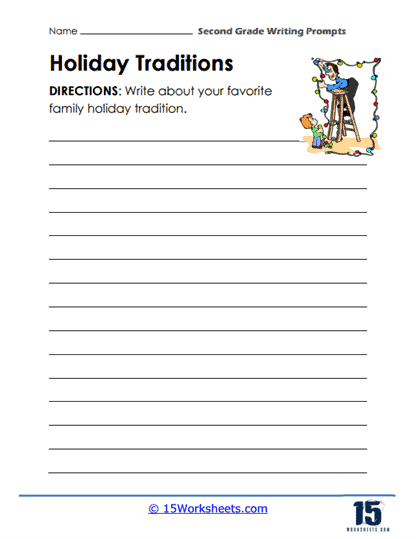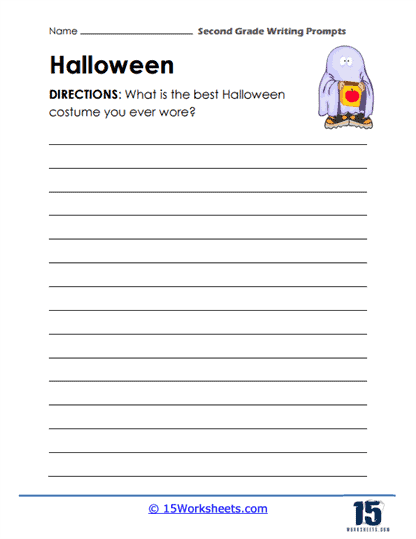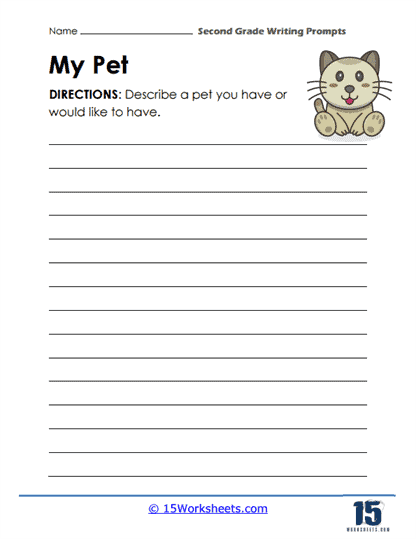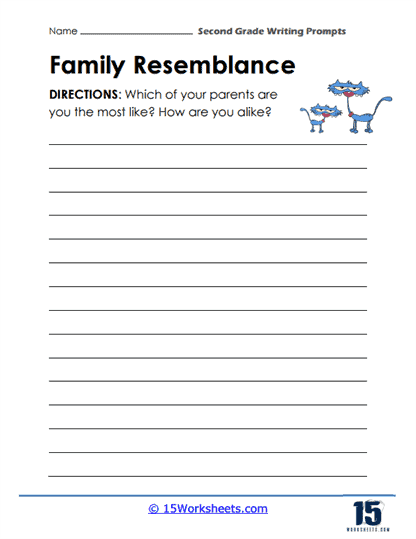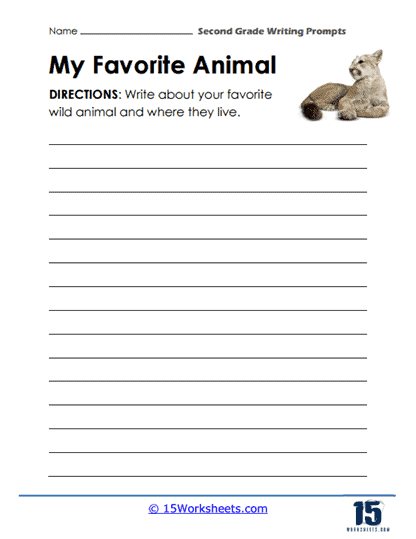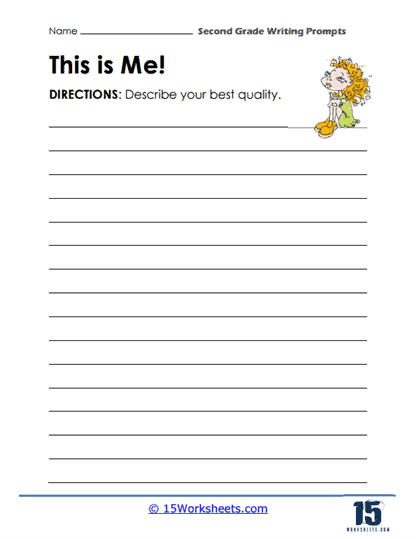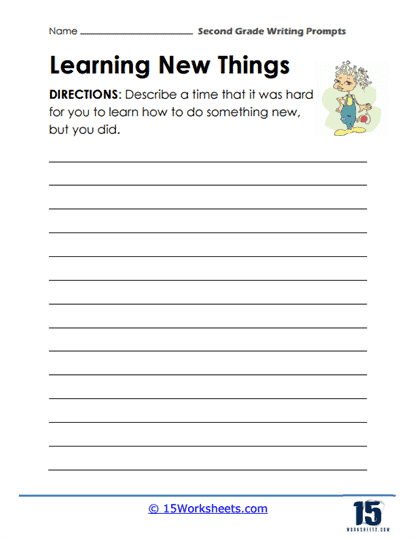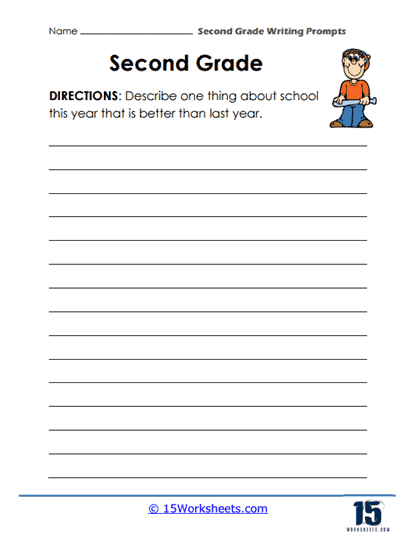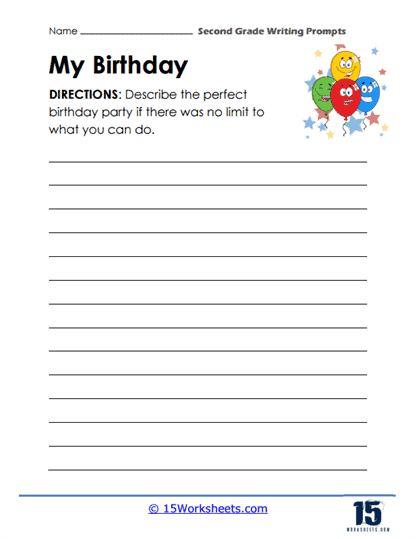2nd Grade Worksheets
All About These 15 Worksheets
The word prompts encourage you to be creative and use your imagination. You could take those words and create your own stories and ideas. This can help you think creatively and come up with unique and exciting things. Encouraging second graders to write can be an exciting and rewarding experience.
Create a positive and enjoyable atmosphere for writing. Incorporate games, creative prompts, and interactive activities that make writing engaging and entertaining. For example, you can organize a storytelling circle where each student contributes a sentence or a paragraph to create a collaborative story.
Allow students to choose their writing topics whenever possible. Giving them the freedom to write about things they are interested in will make the writing process more enjoyable and meaningful for them. Encourage a variety of genres, such as stories, poems, letters, or even comics.
Help students understand the practicality and importance of writing by linking it to real-life situations. For instance, encourage them to write thank-you notes, make shopping lists, or write about their favorite hobbies. Making writing relevant to their daily lives will make it more purposeful.
Remember, every child is unique, and it’s important to be patient and provide individualized support to cater to their needs. With consistent encouragement, positive reinforcement, and engaging activities, you can inspire second graders to become confident and enthusiastic writers.
How Do You Help 2nd Grade Students Improve Their Writing Ability?
Helping 2nd grade students improve their writing abilities involves a combination of structured teaching, hands-on practice, encouragement, and creative activities. Here are some strategies you can use:
Model Good Writing – One of the best ways to help children understand good writing is to demonstrate it. You could write in front of them, discussing your thought process and how you’re choosing words, constructing sentences, etc. Before you begin modeling, carefully plan and prepare the writing piece you will be demonstrating. Choose a topic or prompt that is relevant and engaging for the students. Outline the structure and key points of your writing to ensure a clear and organized demonstration.
Reading and Writing Connection – Reading to children and encouraging them to read regularly can significantly improve their writing skills. It enhances their understanding of grammar, enriches their vocabulary, and shows them different ways to structure sentences and stories. Encouraging students to read extensively and to write regularly nurtures the reading and writing connection. Teachers can design activities and assignments that integrate reading and writing, such as response journals, book reviews, and creative writing based on texts.
Vocabulary Building – Introduce new words regularly and encourage children to use these new words in their writing. Make vocabulary learning fun by using games, flashcards, and activities.
Regular Writing Practice – Give students regular opportunities to write. This could be through journaling, story writing, or other creative writing activities. Prompt them with fun, engaging topics that interest them.
Peer Review and Collaboration – Encourage students to share their work with their peers and get feedback. This not only improves their own work, but also helps them learn to give constructive criticism.
Provide Constructive Feedback – When students finish their writing assignments, provide feedback that highlights their improvements and successes and gives suggestions for areas to work on. Be sure to balance criticism with praise to maintain their confidence and enthusiasm for writing.
Encourage Creativity – Give children opportunities to write creatively. This could be through story prompts, poem writing, or even comic strip creation. This encourages them to express their ideas in unique ways and makes writing more enjoyable.
Use of Technology – There are numerous educational apps and online tools available that can make writing fun and interactive for children. Some of these tools offer exercises to improve grammar, sentence structure, and spelling.

